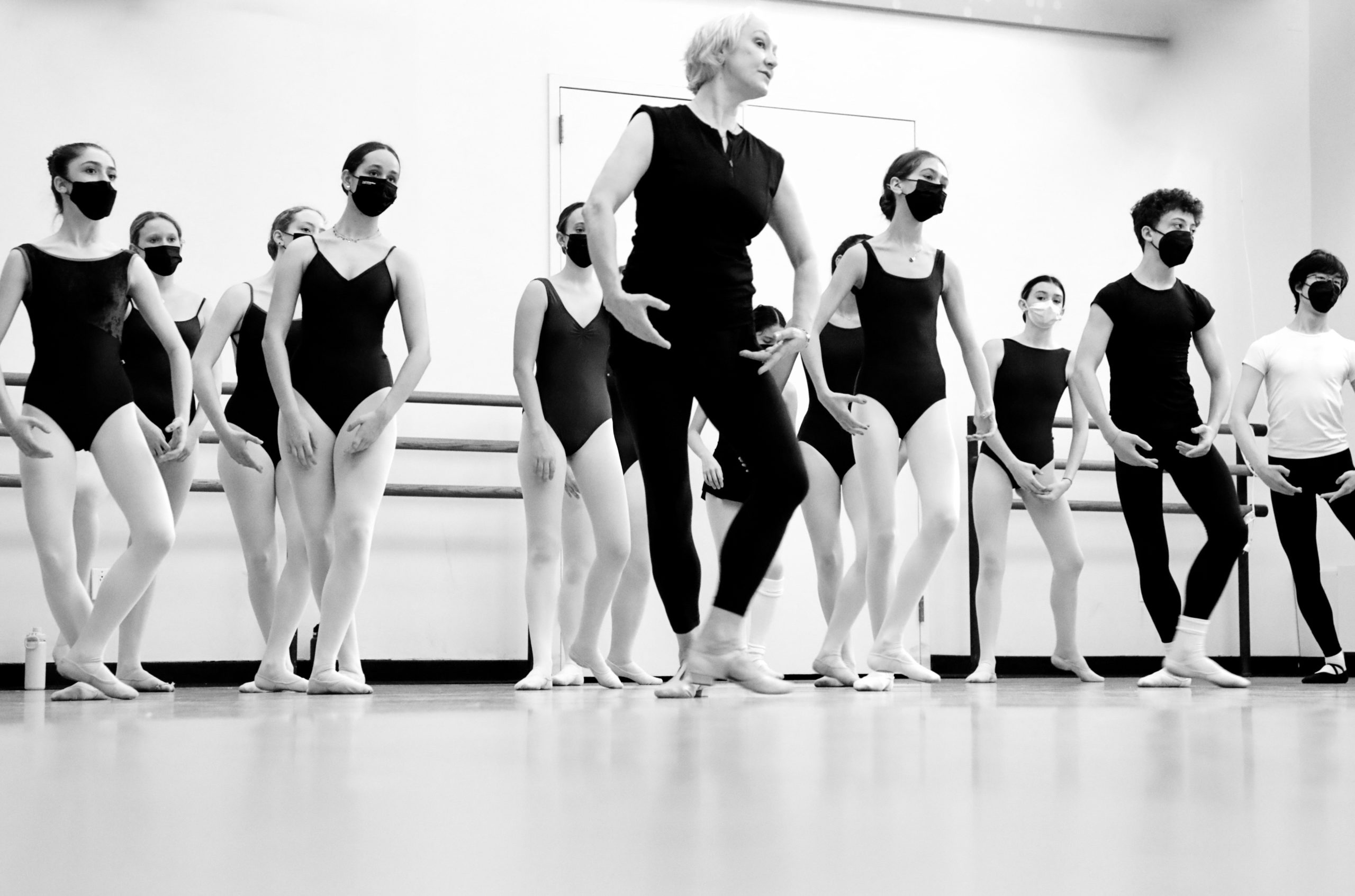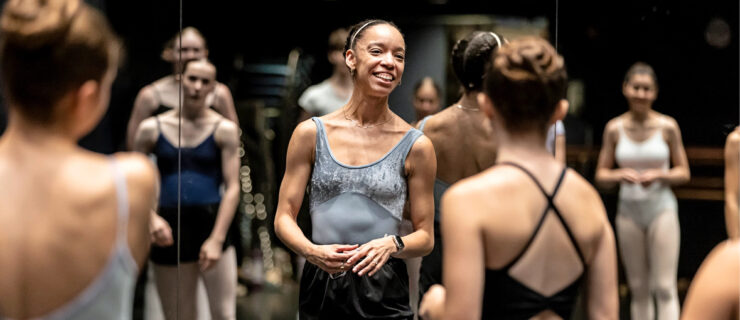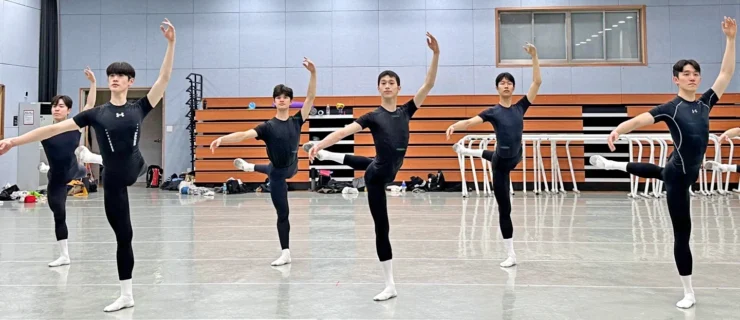How to Deal With Crowded, Stressful Class Scenarios
For most dancers, technique class is a familiar daily routine. But dancing in an unfamiliar setting can really throw you for a loop. Whether you’re taking a crowded open class, a mixed-level class at your studio, or auditioning via company class, you need to be able to adjust. While these situations can be frustrating or intimidating, going in with some practical strategies and the right mindset will help you make the most out of less-than-ideal circumstances. Read on for expert advice on how to deal with stressful class scenarios.
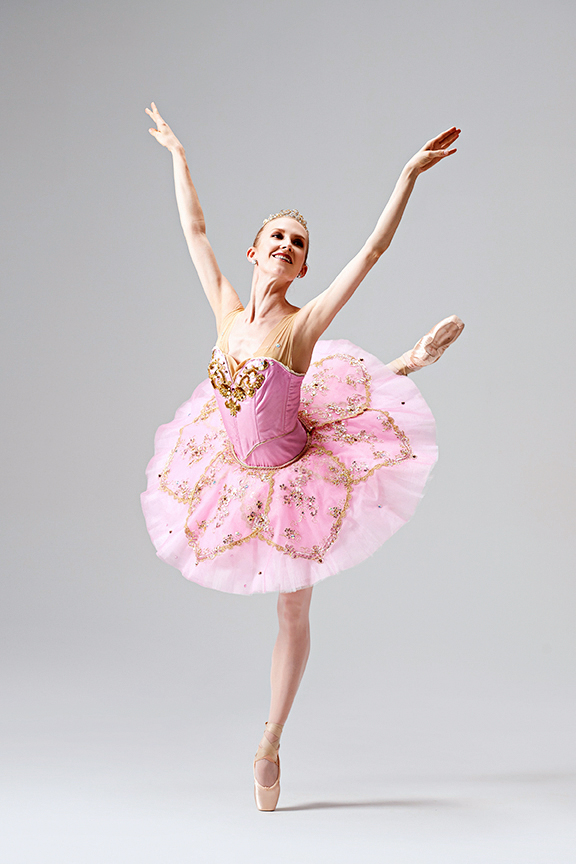
Open Class
Erin Ginn is a freelance dancer based in New York City, where she regularly takes open classes at Steps on Broadway, Peridance Center and Ballet Arts. She remembers her first time in Nancy Bielski’s popular professional-level class at Steps. “It was extremely crowded,” she says—and intimidating. “But at the same time, it was pretty thrilling to be surrounded by all those different dancers.”
Ginn has been a regular in Bielski’s class ever since, and has seen and experienced all the hazards a drop-in class presents. Here, she and Bielski offer their tips for open-class protocol.
1. Dial Up Your Spatial Awareness
“First of all, if you’re new in an open class, you have to acknowledge that you’re a guest entering into a new space. Observe the dynamic between the teacher and the other dancers and how they take up space,” says Ginn, who was once kicked by another dancer who was unaware they weren’t traveling in sync with their group. “With so many moving pieces and body parts, it can get dangerous if you don’t pay attention to your surroundings.”
In a crowded studio, you may have to curtail your movement to accommodate those around you. This is especially true if you’re unfamiliar with the flow of a particular class, the “traffic patterns” of how groups form and disperse for center combinations.
2. Acknowledge Your Level
Bielski’s class at Steps is professional-level, but that doesn’t mean non- or pre-professional dancers can’t attend. That said, if you discover that a class is faster-paced or more advanced than you’re used to, respect that. “If you’re taking open class at a higher level—or if you’ve never been to that particular class before—always stay in the back for center work,” says Bielski, who sometimes sees students, hoping to be noticed, placing themselves in front of seasoned pros. “I like the eagerness of the students, but if new, they should not plunk themselves directly in front of anyone, especially the professional dancers.” If you haven’t picked up the combination or if it’s too hard for you, don’t do it. “Find a spot in the back and work on it, but stay out of the way,” Bielski says.
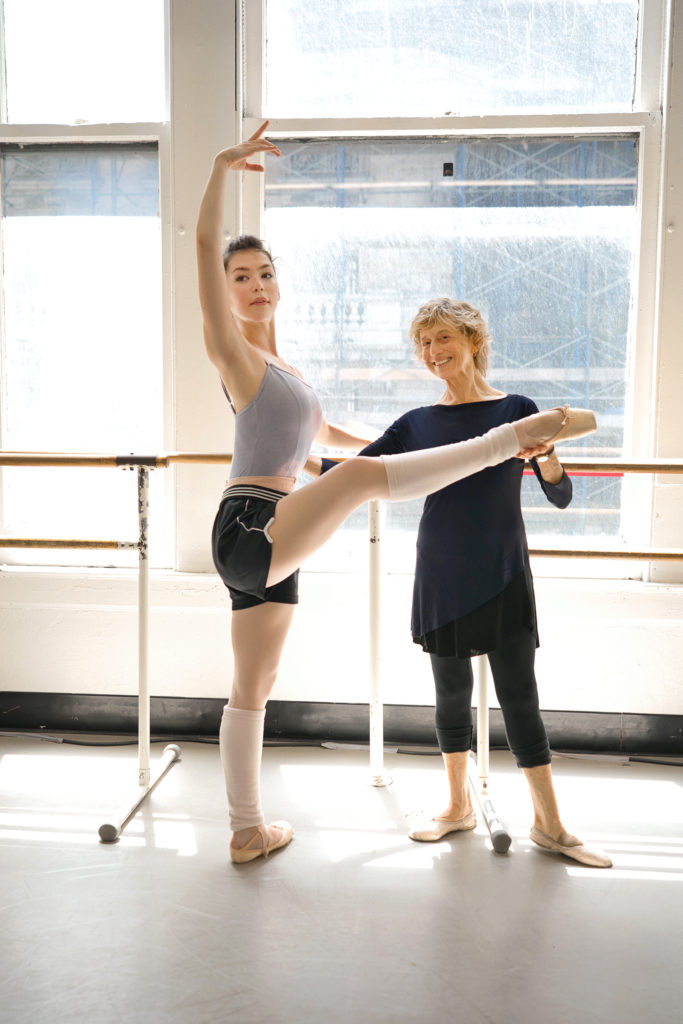
3. Be Respectful
Students might feel they need to snag a prime barre spot, but courtesy and respect for more senior dancers or class regulars is more important. Always ask someone nearby if a barre spot is free before claiming it. In center, avoid rushing into the front line without looking around first. “I’d hang towards the back, and if no one is indicating that they’re going to the front, then go ahead and stand there,” says Ginn. “Trust that the teacher will see you no matter where you’re standing.”
Simple courtesies, like thanking the teacher and accompanist after class and introducing yourself if you’re new, always apply and will get you noticed even in a crowded class.
Mixed-Level Class
Ideally, your home-studio’s classes are tailored specifically to your level. But what about those occasions—a pre-performance warm-up class or scheduling conflict—when classes are combined, or you have to take a lower or higher level than your own? Deborah Wingert, co-artistic director and head of faculty of Manhattan Youth Ballet, explains how to deal.
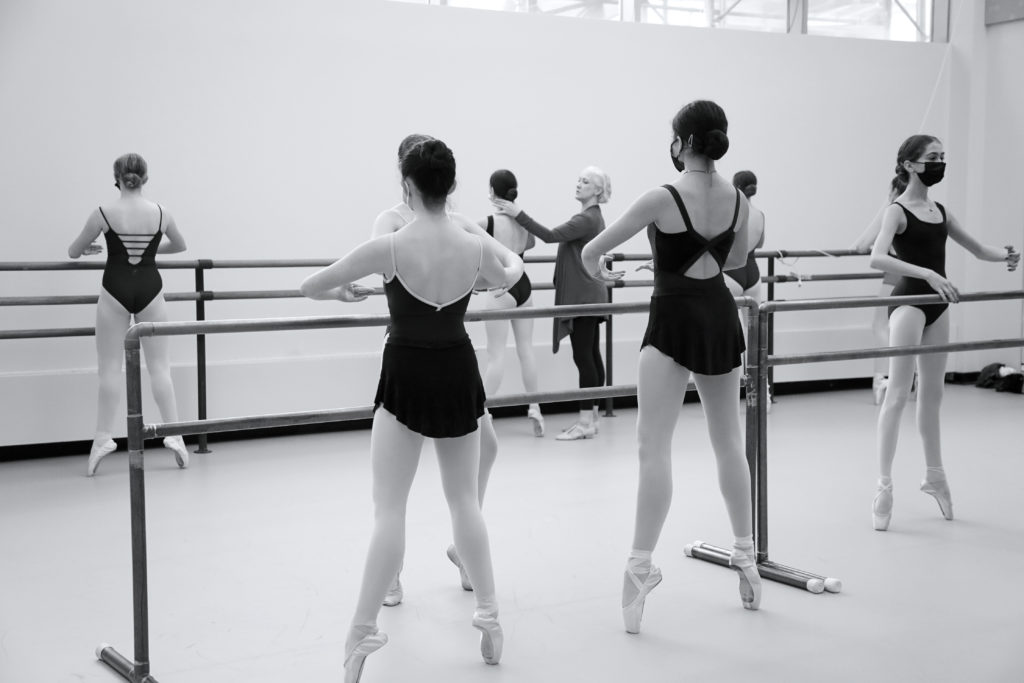
1. When Class Feels Too Easy
Being in a class that’s slower or easier than you’re used to can feel boring, but Wingert says it’s actually a great opportunity. “Going back to basics and slowing down is one of the best things an advanced dancer can do,” she says. “Ask yourself: ‘What can I gain from this? How cleanly, purely and precisely can I do this exercise?’” Wingert recommends doing a simple combination with extra attention to your arms, turnout or musicality. Don’t alter the exercise—that’s rude, says Wingert—but finding an out-of-the way spot to try it on relevé or with more turns or beats is okay (if you won’t be distracting others). Younger students will be looking at you to set an example, both in terms of behavior and attitude.
2. When Class Feels Too Hard
Your number one priority should be safety. Trying a complex step you haven’t yet been taught can be dangerous, so “do what you know,” says Wingert. “Simplify the combination—do a relevé instead of a pirouette, or do the jumps without beats.” She adds that sitting out a combination isn’t a bad thing. “Move over to the side, watch it a few times and maybe try it there. But if you’re really overwhelmed, you might hurt yourself or run into someone else and endanger them.”
3. Dealing With Frustration
“Not every day is spectacular,” says Wingert. Acknowledge any frustration you’re feeling, but don’t give up. Ballet training happens in bite-sized morsels, she adds, and so does each class. Focus on one aspect per combination that is irrelevant to how hard or easy it is—your footwork, turnout or musical accuracy—and remember that tomorrow is another opportunity.
Company Class Auditions
Auditioning for a company by taking their morning class is a great way to get to know it, but it can be extra-nerve-racking. Carly Wheaton, an Oregon Ballet Theatre soloist who’s auditioned in multiple company-class settings, offers advice on how to stand out, fit in and dance your best in a completely unknown environment.
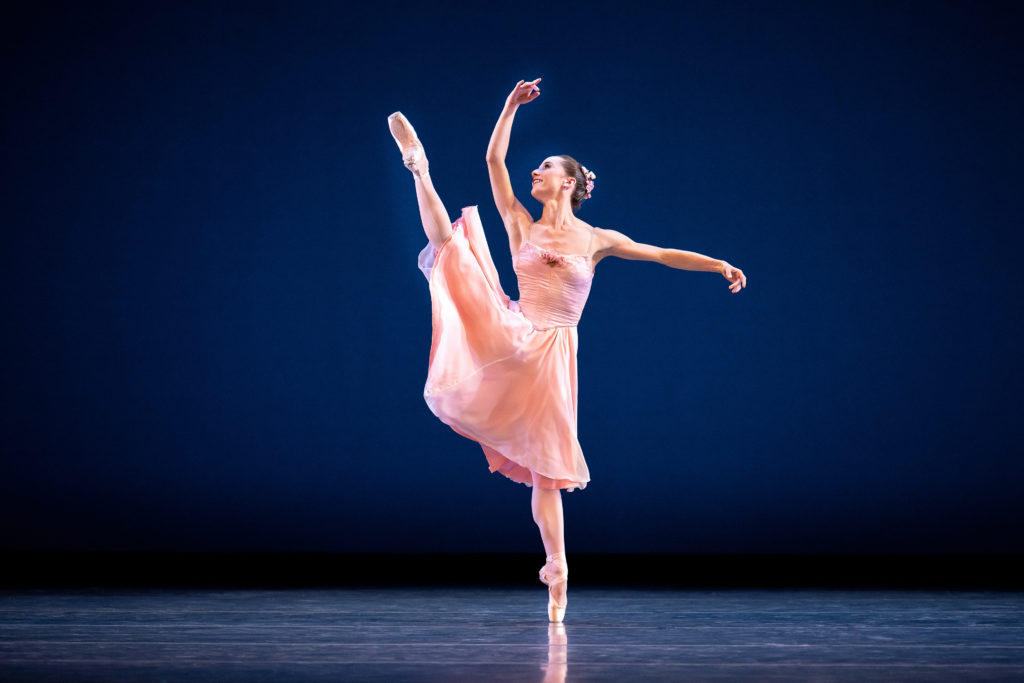
1. Dealing With the Unexpected
In unfamiliar settings, be prepared to make quick adjustments. When Wheaton auditioned for Ballet Zürich, she found the barre fast-paced and couldn’t pick up details of some of the combinations. She concentrated on staying focused despite being frazzled. “The company seemed used to it; I think it was normal for them,” she says. “It was exciting, but also very distracting.” Between barre and center, she took a moment to breathe and re-center herself. “I tried to embrace it and remember it was just a class, something I do every day.”
2. Assertive vs. Pushy
Balance confidence with sensitivity to what’s happening around you. Be open to the energy of the room from the get-go, says Wheaton: “Stay focused, but don’t put blinders on. Remember that you’re in their space and that they’re preparing for their day. Asking a company member where a free barre spot may be shows you’re respectful.”
In the center, try making eye contact with the dancers near you before stepping into a line or group. Even in crowded company classes, Wheaton trusted that the director or artistic staff were watching her regardless of where she stood. While overtly changing a combination is a bad idea, you can find opportunities to “show off” within its parameters, like playing with musicality or holding a balance.
Reflecting on her experiences, Wheaton thinks she’d advise herself to be more confident in demonstrating her individuality, while showing respect for the class environment. “There’s a lot to think about—learning the combinations, keeping up with the pace. Let those things go a little and just take class for yourself. Show your strengths and try not to get bogged down in perfection.”
